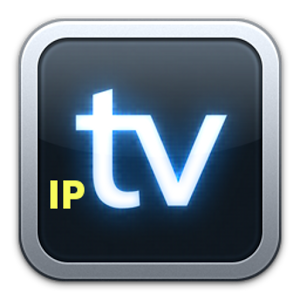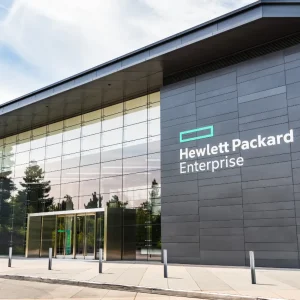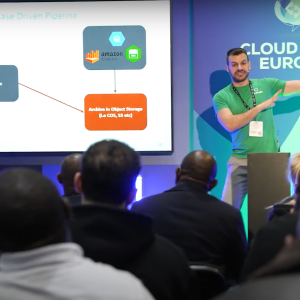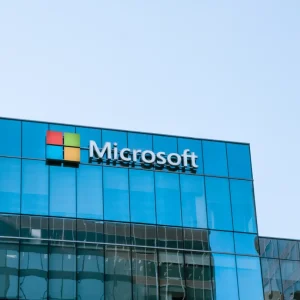
The broadcast industry has been out in force in Amsterdam (see below) and high on the agenda is the revolution in IP based content delivery and the radical shake up that it will bring to just about every player in the space.
For the IT industry how broadcast as a sector responds to digital transformation will be one of the most visible 4th industrial revolution case studies.
How an IT and IP based revolution is executed is fraught with challenges for IT companies, for traditional broadcasters, for the broadcast regulators and standards bodies and for the century old industrial manufacturing and services ecosystem which has grown up around cinema, television and radio.
The prize is huge. Just the internal goods and services market for the broadcasting market is estimated to be worth around $49bn.
As an industry, broadcast is over one hundred years old. The Royal Television Society was formed in 1927, cinema started in France in 1895 and radio broadcasting began in 1910.
It is an industry that is being radically shaken up by digital disruption.
IBC, the International Broadcasting Convention is an annual exhibition and conference which runs over five days in September in Amsterdam attracting 55,000 attendees and 1600 exhibitors.
Digital technology, or what the IT industry understands by digital technology, was in evidence in very exhibition hall (all 15) at the recent event.
The event, now in its 50th year attracts suppliers and users from across every aspect of the broadcast industry from studio equipment makers, providers of outside broadcast technologies, satellite communications companies to cable providers and Government owned public service broadcasters and international broadcasting businesses.
As well as supply side participants which include well known global brands Sony and LG and firms better known to the broadcast sector such as Imagine Communications and Snell Advanced Media, this year saw many names from the IT industry in evidence at both the conference and exhibition.
These included IBM (read about IBM's AI generated trailer for a big budget horror movie), Google, Amazon Web Services, Cisco, HP Inc, Hitachi Data Systems, Intel and Equinix.
The reason for increased interest from the IT community is that in common with many other sectors each aspect of the TV industry – from creation to management to delivery – is undergoing its own digital transformation with all of the implications, challenges and opportunities therein.
Next Page: Follow the money…
Follow the money…
To begin with the money and to understand where the digital disruption begins, one of the first keynotes at this year’s IBC conference came from Sir Martin Sorrell, CEO of global media agency WPP.
In a broad address Sir Martin expanded on his call for transparency from Google and Facebook on their advertising data, performance and effectiveness.
The brands for which Sir Martin’s firm spends billions of pounds on advertising are pressing for ever more data.
According to Campaign WPP group will spend $6bn with Google in 2016 and saw spend with Facebook grow 68% in 2016 to $1.7bn.
That level of spending with big web businesses, and its growth is the one of sharpest examples of how digital is already forcing disruption onto traditional broadcast media businesses.
From Sir Martin and WPP’s perspective Facebook and Google are predominately media companies as they monetise inventory. He has a point – see CBR's list of names of those who block ad blockers
This is important because content follows eyeballs, and advertising revenue follows content that attracts eyeballs.
A technology revolution – playing in the web space
The global broadcast industry is being told that IT and IP represent the future of data transport and it appears to have accepted that this change is inexorable.
Using packet switching to deliver content is the future because of the already established encroaching competition from Over the Top content providers such as NetFlix and Hulu and the many other OTT players to launch which has already shaken the industry.
This was followed by the next wave as the web scale data centre businesses of GAFA – Google, Amazon, Facebook and Apple – expanded into content and serving advertising .
Add changes in the telecoms landscape and the shifting content consumption patterns on mobile and multiple devices – especially among millennials-and it is obvious that television is being revolutionised.
(The first mention of the competition between the internet and TV that I first heard put forward by Larry Ellison, then CEO of Oracle around 1999 when he said the internet was a battle for eyeballs with big TV. The IT industry back then was attempting to make its own content product supply chain right down to new screens. It failed. But the old adage well known in the tech industry that the short term impact of technology is always overestimated while long term changes are always underestimated appears to have struck again in broadcasting.)
Technology disruption is the new normal
The fundamental technology driving this upheaval is Internet Protocol. And it is hard to underestimate the seismic shift being caused. The disruption is accelerating at every level of the sector from creation to management to transport – even down to the creative process. (See Ang Lee, below)
From IP all other disruptions flow – Cloud hosting, data centre flash storage at scale, 1GB, 10GB, 40GB Ethernet switching, software defined networks, content delivery networks, big data analytics, artificial intelligence…the list goes on.
IT must step up on the challenge of streaming media to deliver 4K Ultra High Definition and soon 8K images across IP networks.
The challenges to be overcome include network performance, security, cloud hosting and edge networking.
Business – disruption is the new normal
IP’s capability to deliver a two way relationship with its consumers throws up a whole new set of considerations for providers of traditional linear TV who have operated in a one to many environment.
Traditional broadcasters now understand the business implications for how this changes relationships with audiences – they have seen how Google, Amazon and Facebook do it.
All of the advantages of Social, Mobile, Analytics, Cloud and IOT convergence that IT promises in other B2C industries like banking and retail are equally if not more appilcable to broadcasting.
The industry recognises that deliverables such as customer choice, personalised service on a massive scale, single customer view, ecommerce, omni-channel business models, multi-level engagement and always on communication are acheiveable.
It is also aware of the challenges.
Next Page – The move towards standards – getting from there to here
The move towards standards – getting from there to here..
The broadcast sector has been transferring data around the planet since long before the internet was born.
And like all mature industries it has developed sets of internationally agreed standards which were hammered out over years of negotiation between various organisations, bodies, stakeholders and industry associations.
For example SMPTE, the 100 year old Society of Motion Picture and Television Engineers has over 600 professional and technical standards ‘for television production, filmmaking, digital cinema, audio recording, information technology, and medical imaging.”
Within the industry the debate has begun to make interoperability and standardisation work. The industry knows it must agree on the establishment of standards for packet switching delivery from IT based storage for workloads processed on specially built dedicated servers from the cloud.
Traditional broadcasting is based on SDi (Serial Digital interface) a whole family of technology standards – a version of this standard is Dual Link HD SDi which provides data transfer of around 2.9Gbit/s to support High Definition (HD) and UHD television.
Already some in the industry are predicting the demise of SDi at the hands IP. Whether there is a wholesale great leap forward onto IP and off SDi and if and when this should happen is a topic of great debate within the industry.
At the IBC exhibition and conference many of the industry bodies came together and are progressing with the efforts of the Joint Task Force on Networked Media (formed in 2014) to define a road map for the adoption of IP.
The industry bodies represented on the task force include EBU, the European Broadcast Union, which has a membership of more than 73 predominantly public service broadcasters in Europe. AIMS – the Alliance for IP Media Solutions and AMWA – Advanced Media Workflow Association, and VSF, the Video Services Forum.
At the event, IBC established 'the Interoperability Zone' in collaboration with partner the IABM – International Association of Broadcast Manufacturers and those mentioned above.
It showcased live IP interoperability that Belgian broadcaster VRT has been using daily on-air all this summer as part of the LiveIP Project: a collaboration between VRT, the European Broadcasting Union (EBU) and LiveIP’s twelve technology partners.
Michael Crimp, CEO at IBC, said: “By creating a dedicated zone at this year’s IBC, we made a space to show what has been achieved and the standards around which everyone can group. I look forward to seeing what has been achieved at the IBC IP Interoperability Zone.”
Michael Cronk, VP of Core Technology at Grass Valley and Chairman of the Alliance for IP Media Solutions (AIMS), said: “It will be a showcase for the reality of the technology and a demonstration that the industry is converging on a common roadmap.”
A whitepaper on a Web first ultra high definition scenario is available here.
The pace of change is accelerating across the broadcasting industry. How these standards discussions progress and how quickly standards are agreed and set is vitally important for IP adoption.
Web based content delivery will continue. For example last week Ericsson announced a deal with Google for its MediaFirst TV play into the Android TV ecosystem and new deals are announced weekly as IT, mobile, telco and web businesses carve out their place in the content business.
The dramatic enterprise IT revolutions sparked by the consumerisation of IT, the app economy and customer expectation of web service type levels of performance and interaction have begun in earnest in broadcasting
The revolution may not be televised – but television is certainly being revolutionised.
Next Page: Epilogue Ang Lee's new movie – From creation to delivery – what else is technology changing
Next Page: Epilogue Ang Lee's new movie – From creation to delivery – what else is technology changing
Ang Lee, the two time Oscar winner and the internationally hailed director of films such as Crouching Tiger, Hidden Dragon and The Life of Pi is no stranger to technology and using the power of IT to create worlds and tell stories which are immersive and emotionally engaging.
He used IBC to showcase his latest movie Billy Lynn’s Long Halftime Walk which used high frame rates, 4K and 3D technology.
Mr Lee accepted the award for the International Honour for Excellence at the IBC Awards 2016
IBC’s future Zone showcased Virtual Reality and Augmented Reality technologies with LG’s super thin multi-screen 8K display screen attracting a huge amount of attention.






